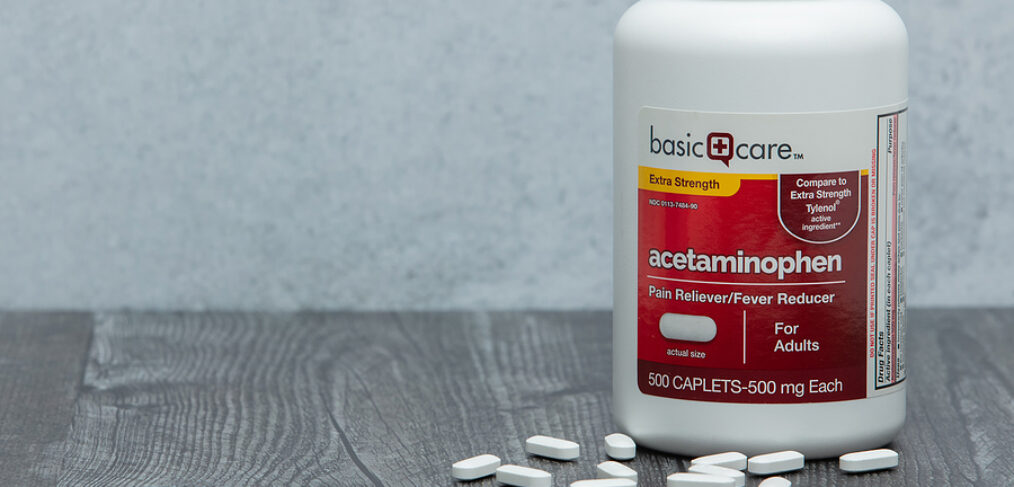
Perioperative acetaminophen use significantly reduces opioid utilization and improves pain control following arthroscopic rotator cuff repair
SAN DIEGO, Calif. (August 31, 2021)—Including acetaminophen for pain management prior to and after arthroscopic rotator cuff repair (ARCR) can significantly reduce opioid consumption and improve patient satisfaction post-surgery, according to a new study presented at the 2021 Annual Meeting of the American Academy of Orthopaedic Surgeons (AAOS). The study, “Effect of Perioperative Acetaminophen on Pain Management in Patients Undergoing Rotator Cuff Repair: A Prospective Randomized Study,” also found that patients who took acetaminophen throughout the overall surgical process (pre-, during, and post-surgery) had better pain control, even while taking less opioids.
“When thinking about perioperative and postoperative pain management, acetaminophen is not always seriously considered,” said lead researcher Joseph A. Abboud, MD, professor of orthopaedic surgery at the Sidney Kimmel Medical College of Thomas Jefferson University and chief medical officer at Rothman Orthopaedic Institute in Philadelphia. “It is considered as part of the preoperative pain medication cocktail, but not for the regimen during or after surgery to help offset the need for other medications, like opioids. This study shows the benefits of including acetaminophen and highlights the need for it to be part of the education on pain management.”
Approximately 250,000 rotator cuff repairs are performed in the United States each year.[i] While ARCR can reduce long-term pain and improve patients’ quality of life, it can be accompanied by significant pain, especially in the early postoperative period.[ii],[iii] Opioids are considered the gold standard for pain management after orthopaedic surgeries; however, there are significant side effects, and opioids are associated with the potential for dependence and abuse.[iv] Because of this, Dr. Abboud and his colleagues set out to study alternative options for post-surgical pain management.
A total of 57 patients, ages 30 to 80, were included in the study. The patients, who underwent ARCR at a single institution from June 2019 to March 2020, were randomized to one of three treatment groups. All patients received interscalene blocks with liposomal bupivacaine (Exparel) preoperatively.
- Group one (control) received both 5 mg of oxycodone every six hours as needed and 1,000 mg of acetaminophen orally every six hours as needed after surgery. Patients had the option to take either, neither, or both medications.
- Group two (control) received 5 mg of oxycodone every six hours as needed without any additional acetaminophen after surgery.
- Group three received 1,000 mg of acetaminophen orally every six hours for one day prior to and after surgery, which was decreased to every eight hours in postoperative days two through five. Patients were allowed to take 5 mg of oxycodone every six hours as needed after surgery.
Patients in the third group who did not take the prescribed dose of acetaminophen before and after surgery were excluded from the study. Patients in all groups were instructed not to take any other pain medication. On days one through seven following surgery, patients received a daily survey that included five questions:
- Did you take any opioid medication today (yes/no)?
- If yes, how many pills and at what times?
- How would you rate your pain today (0-100)?
- If you experienced any side effects, what were they?
- Are you satisfied with your pain control?
The primary outcome of the study was the total number of 5-mg oxycodone pills patients took in the first week after ACRC. Secondary outcomes included daily side effects, level of pain experienced, and satisfaction with pain control. The findings included:
- Patients in group three consumed significantly fewer 5-mg oxycodone pills overall compared with the other treatment groups (group one: 12.97; group two: 18.88; group three 8.06; P=.017).
- Patients who took acetaminophen before and after surgery took approximately 10 fewer opioid pills in the first week after surgery compared to patients who took no acetaminophen, and four fewer pills than patients who took acetaminophen only as needed after surgery.
- The average pill consumption in group three was significantly less than in groups one and two on day one: 2.1 vs 3.0 (P=.03) and 2.1 vs. 3.2 (P=.02), respectively.
- Group three patients reported significantly better overall pain control on a 0-100 scale than patients in the other groups (P=.040).
“I was pleasantly surprised that acetaminophen made such a significant difference in opioid use with patients,” said Dr. Abboud. “We saw an improvement in pain levels and satisfaction postoperatively, which translates to fewer calls from patients who say their pain medications are not working. This provides the evidence we need for when we speak to patients. Every drug has side effects, but of all the drugs available, acetaminophen has been around for a long time, with minimal side effects, making it an important component of the overall pain management process.”
To review AAOS’ evidence-based clinical practice guidelines on the management of rotator cuff repair, please visit https://www.orthoguidelines.org/topic?id=1027.
# # #
2021 AAOS Annual Meeting Disclosure Statement
About the AAOS
With more than 39,000 members, the American Academy of Orthopaedic Surgeons is the world’s largest medical association of musculoskeletal specialists. The AAOS is the trusted leader in advancing musculoskeletal health. It provides the highest quality, most comprehensive education to help orthopaedic surgeons and allied health professionals at every career level best treat patients in their daily practices. The AAOS is the source for information on bone and joint conditions, treatments, and related musculoskeletal health care issues, and it leads the health care discussion on advancing quality.
Follow the AAOS on Facebook, Twitter, LinkedIn, and Instagram.
For more information, contact:
| Lauren P. Riley | 847-384-4031 | 708-227-1773 | pearson@aaos.org |
| Deanna Killackey | 847-384-4035 | 630-815-5195 | killackey@aaos.org |
